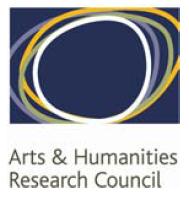Past Meetings
The history of prehistory in the Tyne-Forth Region: the impact of the recent past on our understanding of the distant past
Date:Saturday 28th April 2012
Location: Berwick-Upon-Tweed
Our present understanding of prehistory in our region stems from the ideas and efforts of those who have gone before us. But how did earlier workers get their ideas and arrive at their interpretations? Their thinking was, like ours, a complex process of exploration, and each is or was embedded within current intellectual, social, political and economic ‘climates’. How did studies of prehistoric archaeology in the region develop, and what is the legacy of these historical events and trajectories? What discoveries, ideas, practices, institutions and technologies have been particularly influential in this history? What role do these still have today given the discoveries, ideas, practices, institutions and technologies that have come since?
This day conference will reflect on the history of antiquarianism and archaeology in our region over the past few hundred years up to the present day. We invite contributions of c. 20 minutes duration, or shorter, on this broad topic. They can be diverse in purpose, focus or form. As well as analyses tracing the current significance of ideas, contributions might explore the ways in which local societies were formed or inspired, the sparks that lit an abiding affection for archaeology, and reminiscences of past teachers, researchers and excavations.
Timetable
10.00am Introduction to the meeting from Richard Tipping
Chair of Morning Session: Richard Tipping
Talks of c. 25 minutes duration with c. 5 minutes of questions
10.15am Kristian Pedersen (Edinburgh University)
Mesolithic Studies Between the Tyne and Forth
10.45am Start Halliday
In with the bricks; surveys and surveyors lurking in the shadows of our past.
11.15am Refreshments
11.45am Adam Welfare (RCAHMS)
Cord Rig: what we know and what we might wish to know
12.15pm Discussion of the morning papers
1.00pm Lunch
Chair of Afternoon Session: Chris Fowler
2.00pm Dave Cowley (RCAHMS)
Creating the cropmarked record of south-east Scotland
2.30pm Lindsey Büster, Rachael Reader and Mhairi Maxwell (Bradford University)
The Experiences of Three PhD Students Working on the Broxmouth Project
3.00pm Refreshments
3.30pm Richard Tipping (Stirling University)
Catastrophism, Climate Change, Colin Burgess and The Cheviot
4.00pm Discussion of the Afternoon Papers
4.50pm Concluding Remarks
5.00pm Close
Abstracts
Mesolithic Studies Between the Tyne and Forth
Kristian Pedersen, University of Edinburgh
The Mesolithic of the Tyne-Forth region is eliciting ever more interest, but it is interesting to note the vicissitudes in its fortunes. In Scotland, the study of the material from sites along the Tweed was formerly of considerable significance, yet awareness of the sites and their potential for elucidating settlement has receded into the background whilst investigations of the west coast have become dominant. This paper considers the early work in this region and explores the different traditions and research priorities on the English and Scottish sides whilst presenting some new evidence and suggests profitable directions of inquiry.
In with the bricks; surveys and surveyors lurking in the shadows of our past.
Strat Halliday
Archaeological plans are the barometer of contemporary perception of field monuments. The understanding of the earthwork record in Scotland was initiated in the late 19th century in the Border counties by David Christison, born of a Victorian tradition of cataloguing and classification, and carried forward in the 20th century in a series of Royal Commission Inventories. The plans these contain mark the evolution from paced adaptions of OS depictions to independently measured surveys with standardised conventions, though this is not always to the benefit of our understanding today. Nevertheless, they stand testament to some remarkable surveyors, whose observations continue to underpin our knowledge and influence our thinking
Cord Rig: what we know and what we might wish to know
Adam Welfare, RCAHMS
The development of our understanding of cord rig following its first recognition in 1981, as a series of narrow ridges adjacent to a succession of palisaded settlements on Gibbs Hill, Dumfriesshire, can be readily divided into five phases: revelation, recognition, research and synthesis - all leading on to a consolidation of the knowledge gradually accrued in the process.
The presentation will briefly review this evolutionary sequence, commencing with the first disclosure of the rig-system within our region in profile beneath the Vallum in Stanley Plantation, near Milecastle 23, during the excavations conducted by Brenda Heywood (nee Swinbank) in 1954. However, this historical account is not intended to be congratulatory, but rather the necessary preliminary to an assessment of what we might still wish to learn about this ancient system of cultivation.
Creating the cropmarked record of south-east Scotland
Dave Cowley, RCAHMS
In the arable lowlands of southeast Scotland and northeast England the contribution of aerial survey to the archaeological record has been immense. Plough-levelled sites recorded from the air as cropmarking underpin our knowledge of many periods, especially the Iron Age. This paper presents an analysis of the formation of that record in southeast Scotland illustrating how vital an understanding of these patterns is to making reliable use of the dataset.
The Experiences of Three PhD Students Working on the Broxmouth Project
Lindsey Büster, Rachael Reader and Mhairi Maxwell, Bradford University
The Broxmouth hillfort excavations (1977-78) were iconic in the archaeology of the Tyne-Forth region, both in terms of scale and preservation; many of its leading archaeologists learned their trade in its soils. Despite the significance of the initial findings, the results were never fully disseminated and the site represented one of Historic Scotland’s largest backlog projects.
Broxmouth is now being written up at the University of Bradford, directed by Professor Ian Armit and managed by Dr Jo McKenzie. As part of this project, three PhD projects have examined specific aspects of the Iron Age archaeology of SE Scotland, using Broxmouth as a starting point.
With the publication of Broxmouth nearing completion (Armit and McKenzie in prep), we (the PhD researchers) take this opportunity to reflect on the initial excavations, and their influential findings in each of our topic areas. We will then explore how the archive has been used, by each of us, to ask new research questions and how we have used new research methods to build on understandings of Iron Age society.
Armit, I. and McKenzie, J in prep 2013. An Inherited Place: Broxmouth and the southern Scottish Iron Age. Edinburgh: Society of Antiquaries of Scotland, Monograph Series.
Catastrophism, Climate Change, Colin Burgess and The Cheviot
Richard Tipping, University of Stirling
Through the 1980s and 1990s, Colin Burgess, among our region’s most significant archaeologists, crossed several disciplinary confines to try to understand what he saw as major population movements in and around the Cheviot Hills in later prehistory. In particular, Colin turned to the palaeoclimatic record to explain settlement shifts uphill in the early Bronze Age and downhill at the end of the Bronze Age. In making at this time this highly original connection, Colin explored what was then a fairly thin and non-quantified climatic history. His largely deterministic position on this went ‘against the grain’, and his catastrophist interpretation of the archaeological record came when change was understood to be gradual. Enormous investment in palaeoclimatology in the last 20 years now allows Colin’s interpretations to be re-assessed, with intriguing results, and the greater recent focus on chronology construction in describing environmental change in the earth sciences allows us to reflect both on catastrophism and environmental determinism in explaining social change.



